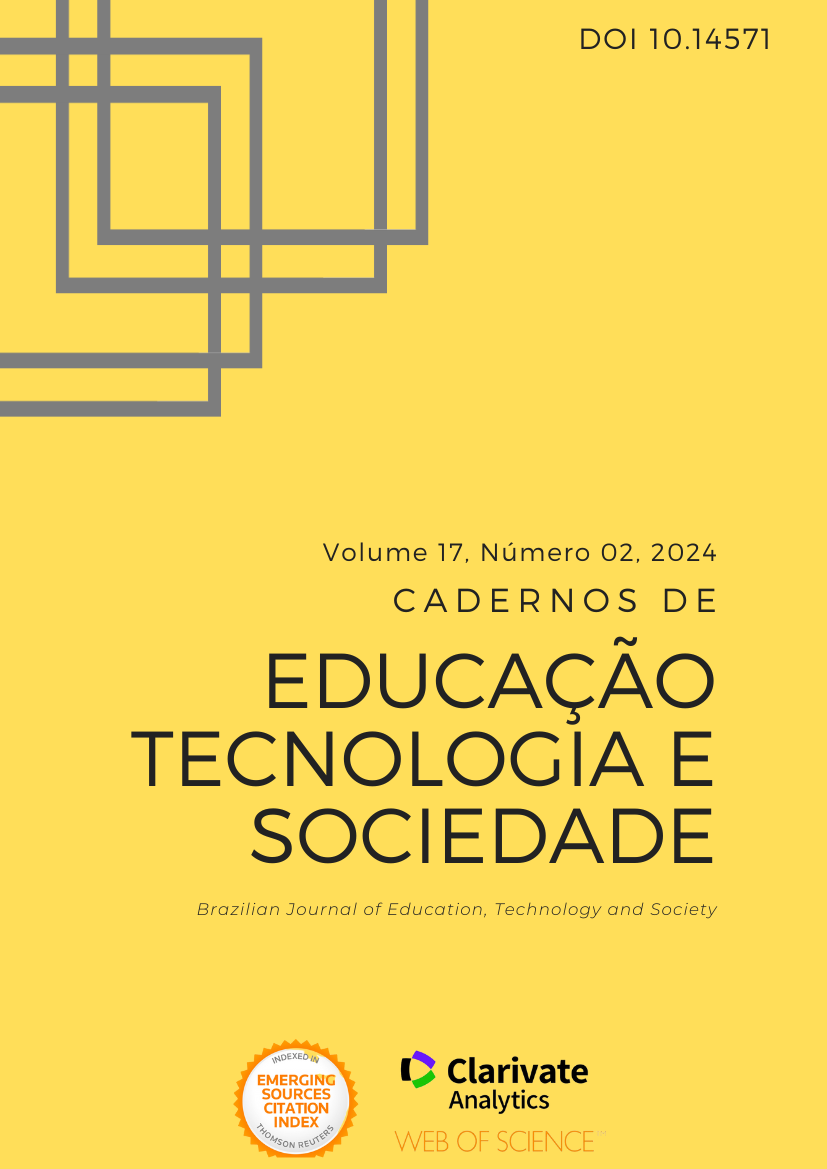Investigação da Equivalência Hermenêutica de Expressões Idiomáticas na Tradução
DOI:
https://doi.org/10.14571/brajets.v17.n2.781-788Palavras-chave:
expressões idiomáticas, tradução, abordagem hermenêutica, equivalência interpretativa, idiomaResumo
O artigo apresenta uma abordagem hermenêutica aos equivalentes idiomáticos no contexto da tradução. A abordagem hermenêutica, baseada na atividade, destaca a essência da tradução como um processo de transferência da forma de pensar e da organização da atividade do pensamento de uma cultura para outra. A aplicação da abordagem hermenêutica implica a transição do nível tradicionalmente considerado de significados para o nível de relações de significados e a consideração dos modismos como um sistema de significados explícitos e implícitos que são percebidos em diferentes níveis do sistema de atividade do pensamento. A equivalência hermenêutica é considerada com referência à fixação da reflexão em diferentes níveis do sistema de atividade do pensamento (pensamento-ação, pensamento-comunicação e pensamento não verbal).Referências
Broeck R. (1981). The Limits of Translatability Exemplified by Metaphor Translation, Poetics Today, Translation Theory and Intellectual Relations. - 2(4), 73-87
Boucher, D. J. (1996). Buddhist translation procedures in third-century China: a study of Dharmarakṣa and his translation idiom. University of Pennsylvania.
Chidlow, A., Plakoyiannaki, E., & Welch, C. (2014). Translation in cross-language international business research: Beyond equivalence. Journal of International Business Studies, 45, 562-582.
Dagut M.B. (1976), Can Metaphor Be Translated?, Babel: International Journal of Translation, XXII (1), 21-33
Kharmandar, M. A., Ahmadi, S., & Bozorgi, A. (2017). Can Equivalence Theoretically Explain Terminology Translation? The Case of Vinay and Darbelnet. In First National Conference on Innovative Multidisciplinary Research in the Humanities. Shiraz, Iran. https://ssrn. com/abstract (Vol. 2931299).
Koller, W. (1995). The concept of equivalence and the object of translation studies. Target. International Journal of Translation Studies, 7(2), 191-222.
Mashhadi, E. (2021). Naturalness in Translation: A case Study of the Figurative Elements in the Persian Rendering of To Kill a Mockingbird. International Journal of Language and Translation Research, 1(1), 31-55.
Moyaert, M. (2008). The (un-) translatability of religions? Ricœurs linguistic hospitality as model for inter-religious dialogue. Exchange, 37(3), 337-364.
Sánchez, M. T. (2009). The problems of literary translation: A study of the theory and practice of translation from English into Spanish (Vol. 18). Peter Lang.
Stolze, R. (2011). The translator's approach: Introduction to translational hermeneutics: Theory and examples from practice (Vol. 41). Frank & Timme GmbH.
Van der Louw, T. A. (2007). Transformations in the Septuagint: Towards an Interaction of Septuagint Studies and Translation Studies (Vol. 47). Peeters Publishers.
Xajrullina, R. X. (2006). Idiomatic world view: from seeing the world to understanding it, Ministry of Education Ros. Federation. Bashk. state ped. university. – Moskva : RGB, 300 p. [in Russian]
Downloads
Publicado
Edição
Seção
Licença
Copyright (c) 2024 Elena V. Aleksandrova , Svetlana Y. Rubtsova , Lilia L. Timofeeva , Maria N. Morozova , Anastasia I. Dudkina , Nadezhda S. Tyrkheeva

Este trabalho está licenciado sob uma licença Creative Commons Attribution 4.0 International License. A revista segue a política para Periódicos de Acesso Livre, oferecendo acesso livre, imediato e gratuito ao seu conteúdo, seguindo o princípio de que disponibilizar gratuitamente o conhecimento científico ao público proporciona mais democratização internacional do conhecimento. Por isso, não se aplica taxas, sejam elas para submissão, avaliação, publicação, visualização ou downloads dos artigos. Além disso, a revista segue a licença Creative Common (CC BY) permitindo qualquer divulgação do artigo, desde que sejam referenciados o artigo original. Neste sentido, os autores que publicam nesta revista concordam com os seguintes termos: A) Os autores mantém os direitos autorais e concedem à revista o direito de primeira publicação, com o trabalho simultaneamente licenciado sob a Creative Commons Attribution License (CC BY), permitindo o compartilhamento do trabalho com reconhecimento da autoria do trabalho e publicação inicial nesta revista. B) Autores têm autorização para distribuição não-exclusiva da versão do trabalho publicada nesta revista (ex.: publicar em repositório institucional e não institucional, bem como capítulo de livro), com reconhecimento de autoria e publicação inicial nesta revista. C) Autores sãoo estimulados a publicar e distribuir seu trabalho online (ex.: repositórios online ou na sua página pessoal), bem como aumentar o impacto e a citação do trabalho publicado.

